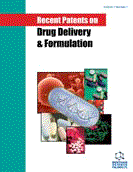Abstract
Background: The quest to improve the therapeutic effectiveness of herbal drugs has driven the pharmaceutical research towards the development of herbal nanoparticles.
Objective: Till date, various approaches have been adopted for the design of herbal nanoparticles.
Methods: We carried out an organized search of bibliographic databases consisting of an ample number of published abstracts and research articles using a focused review questionaries and insertion/ omission criteria. The study was systematically structured to review various phytochemicals formulated as nanoparticles, understand its need and prospects. Indeed, research cited has revealed revival of some phytochemicals with therapeutic efficacy fronts.
Results: Certain patents (US20170157005A1, US20160228362A1 and US20150050357A1) have evinced entrapment concerns of phytoceuticals into nanoparticles. Amongst various phytochemicals, Curcumin, Quercetin, Silymarin, Paclitaxel etc. seems predominant ones being successfully formulated as nanoparticles. The reason for the availability of their splendid formulations lies in the addresal of poor stability, poor water solubility and consequently poor bioavailability.
Conclusion: If bioavailability constraint is overcome, diseases like cancer, Alzheimer's, diabetes, liver disorder etc. can be effectively targeted. By doing so, the largely affected society, will breathe the relief. The present article is an attempt to elaborate and conclude on how nanoparticles have been serving as a tool to enhance the effectiveness of phytochemicals, by solubilization, dissolution and consequent bioavailability enhancements, along with in vivo targeting. To further facilitate understanding, the review discusses disease/disorder and phytochemicals with focus on their nanoparticles.
Keywords: Phytochemicals, bioavailability, herbal nanoparticles, poor bioavailability, targeted delivery, solubilization.
Graphical Abstract
 41
41 3
3














